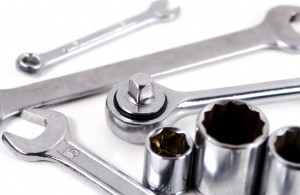 A pressure washer is a major investment, so understandably you want to get the most longevity out of yours. The best way to ensure your washer lasts as long as it should is by taking proper care of it. Pressure washer maintenance is not complicated, but it does make a huge difference. The following tips can help you keep your washer in optimal condition throughout its entire lifespan.
A pressure washer is a major investment, so understandably you want to get the most longevity out of yours. The best way to ensure your washer lasts as long as it should is by taking proper care of it. Pressure washer maintenance is not complicated, but it does make a huge difference. The following tips can help you keep your washer in optimal condition throughout its entire lifespan.
Monitor Oil and Fuel Levels
It’s a good safety measure to check engine oil and fuel levels before and after each use. Oil should be a golden tone; as it ages, its color will darken. Switch out the oil if it starts becoming too dark. Typically oil needs to be changed after 50 hours of use or as recommended by the manufacturer in your user manual.
Use the Right Detergent
Don’t use just any detergent with your pressure washer because you may damage the machine. Instead, only use detergent specifically designed for pressure washers. There are special formulas that react better with the high pressure functions of the machine and using washer detergent is also more environmentally sound than spraying something like basic laundry detergent on your patio.
Remove Dirt and Debris
Keep contaminants out of the pump, as they can clog it and cause a dangerous amount of pressure. This can be done by keeping the oil fresh and flushing out any debris or dirt that builds up inside. Ideally, you want to clean out the pump after every use so that you may prevent any serious buildup or damages. You can run clean water through the washer for 2 to 3 minutes to flush out any excess detergent as well.
Throughout the years, the O-ring and small screens that block debris and prevent the hose from clogging may become worn down or damaged. This is normal if you consistently use your pressure washer, but you may periodically need to clean or replace these pieces if your washer isn’t working as efficiently as it was before.
Spark Plug Safety
If you’re having trouble starting your pressure washer, you may want to take a look at the spark plug. Any time you are going to remove the engine’s spark plug to inspect it, clean the area around it to prevent any dust or debris from falling into the combustion chamber. If the spark plug is clogged, usually you can clean it with a wire brush.
However, if the plug is fouled and you find burns or cracks in it, you will need to replace it. You can measure and adjust the spark plug gap with a feeler gauge. Follow the directions in your operator’s manual for the recommended adjustments.
Smart Storage
Store in a dry, clean location, preferably where temperatures will not be too sweltering or drop below freezing. Make sure there is good ventilation in the storage space and that there is no danger of your appliance catching fire. Protect your pressure washer with a breathable but sturdy cover. Drain all the water out of it before putting it away for long-term storage, as excess water can grow mold or attract bacteria. Keeping your pressure washer in a safe, secure place will help you extend its life expectancy to full potential.






